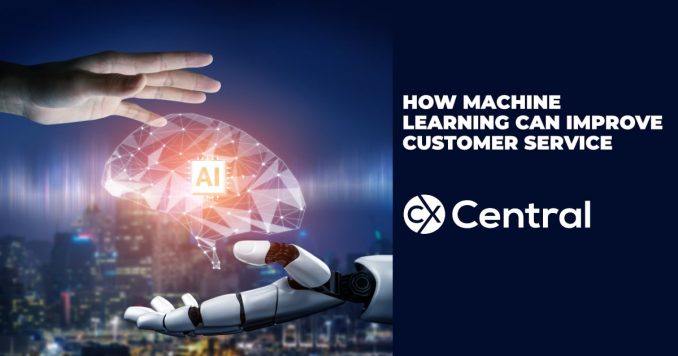
How Machine Learning can improve Customer Service
Customer experience has always been a key concern for ambitious businesses, but it fell by the wayside somewhat while the eCommerce industry was in its infancy. Because it was so much simpler to set out an offer that shoppers could take without any interaction, retail got reduced to the basics: get the lowest price, or provide the best quality, or simply lead the search results.
As the industry grew and competition became fiercer, smart brands came to appreciate that it isn’t just as important to provide great customer service online: it’s more important. Offline businesses — when not in the midst of a pandemic, at least — can take advantage of their locations and the scarcity of certain items in their areas. Not so with online sellers.
With COVID-19 keeping people stuck at home, eCommerce demand has largely increased, and it was already massive. Each passing day sees new sellers joining the fray and trying to profit from that interest, and customer service is the key to standing out and winning loyal customers — but what’s the smartest way to optimise it?
Well, machine learning has proven its power and versatility through bolstering countless facets of business in recent years, and it can certainly help here.
Here’s how machine learning can improve your level of customer service.
3 Ways Machine Learning can improve customer service
1. It can generate useful marketing
It might seem odd to think about marketing as a customer service matter, but there are two things that must be considered: firstly, marketing to existing customers is one of the best ways to drive conversions, and secondly, people often like being marketed to. I like getting marketing emails from my favourite retailers. When I’m sent suggestions that actually match my interests, it saves me time and causes me to view the sender more positively.
Through crunching the numbers and parsing the results on a massive scale, machine learning can produce marketing materials (most notably ads) that yield a lot of sales. The best example that springs to mind is the Kit virtual digital marketing assistant available for free to anyone running a Shopify store.
There’s a complex explanation of its functionality in the Engineering section of the site (you can check it out here if you’re curious), but it’s accurate to say that it uses general store activity and the spending patterns of particular customers to suggest ad types, products, prices, and targets. It simply pops up to suggest running an ad, and all the store owner needs to do is approve it.
2. It can optimise your inventory management
Again, inventory management might not strike you as having much to do with customer service, but again it’s important to think about the wider consequences: online shoppers are accustomed to seemingly-unlimited supply from sellers who can draw from any of their storage facilities, and finding that their desired item isn’t in stock can be enough to push someone to go elsewhere.
Stocking too much is a bad idea because it wastes money, but stocking too little is perhaps worse for the reason we just looked at. Machine learning can optimise inventory management to ensure that fresh stock gets ordered in a timely fashion without spending unnecessarily. That’s what platforms like Remi AI are for: they forecast demand so that customers are kept happy and supply chains can keep moving even in tough times.
3. It can power customer service chatbots
It’s generally important for a serious online seller to have real people providing its customer service, because chatbots just can’t measure up at the moment, and it might be decades before they can consistently stand-in for people (if that ever happens at all) — but that doesn’t mean that customer service chatbots can’t be useful, because they certainly can.
Not only can a service chatbot (search here for local suppliers>) assist customers at all times of the day (meaning it can be in operation in the early hours of the morning when your human assistants are asleep), but it can also scale indefinitely with the right cloud resources behind it. During busy periods — such as when you’re running a big sale — there’s every chance that support demand will outstrip supply.
In addition to deploying chatbots alongside your human support assistants, you can use machine learning to enhance human support sessions: speeding them up, perhaps, or just steering them in the right direction. Suppose that a customer requests support and expresses anger at how their case has been handled, threatening to go to a rival brand instead: an expert support assistant might know the right thing to say, but what about a new hire?
While that new hire is considering how to reply, an attached chatbot could provide some suggested replies marked with confidence levels based on how often they’ve worked before. The assistant would then be able to make a stronger decision about what to say.
Machine learning is a powerful tool that can be deployed in various ways, but the few we’ve looked at here can massively improve your customer service. This is as good a time as any to comprehensively assess your regular operations, so think about how you might make some changes in the coming weeks and months.
If you’d like to find local suppliers of chatbots, virtual assistants, artificial intelligence and more search the AI & Automation category on the ACXPA Supplier Directory.

